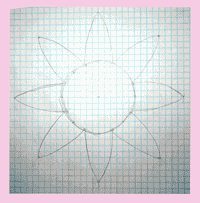Breasts – A How To Guide, Part 2 (sewing)
Ok, at this point I’m assuming you’ve read 2 things already, or at least have some prior knowledge of them . . . first is an overview of breast and bra sizes and shapes from my clothes page. Second is Breasts 101 which covers reasons for using breastform alternatives, and the basic method of stuffing. If stuffing is working fine for you, don’t bother with this article. If you have money you can also skip this – no sense making an “acceptable” breastform with a lot of work if you can afford a fabulous pre-made one. If you’re still reading, the below sections will explain a couple methods for crafting your own breastforms at home.
.
The most straightforward home breastform is basicaly permanent stuffing. The idea here is to sew (yes, you will need to be able to sew for this one) a decently shaped breast which you will then stuff like a stuffed animal or pillow. This way you only have to worry about matching the size and shape of each breast once – after that you just tuck and go. The downfalls of course are that fabric breasts are mostly air – they are lightweight and will not bounce, the are easy to flatten under a tight shirt, and they are not “squeezable”.
.
A sewn breastform can be made in any of the breastform shapes illustrated in the clothes section, though the easiest of course is the round form. Conveniently, the back of the form will be a flat outline of the form’s shape (to fit your chest), and the protruding portion of the form will be made of “triangles” of fabric that line the circumference of the backing and join at a point where the “nipple” will be. Below is a generic round breastform pattern. You might also try seaching the net for “knitted breast form” – I don’t know squat about knitting, but it seems to be a popular method.

Breastform Sewing Pattern
8 “triangles” is probably a good place to start, as they will be easy to space evenly around the round center. But experiment with different numbers – more triangles = more sewing! The diameter of the circle should be about 1/8 you chest circumference. For example, I wear a 34-36″ bra band, so the diameter of each breast would be between 34/8 = 4″ and 36/8 = 4.5″. To find the height of the traingles from circles edge to peak, use the formula:
h = sqrt( r^2 + cup^2 ) + 1/4″
where r is the radius of the circle (half the diameter), and cup is 1/2 for an A cup, 1 for a B cup, 1.5 for a C cup, etc. For example, to make a C cup breast for my 34″ band, the circle diameter would be 4″. That makes the radius 2″. The cup value for a C cup is 1.5″. So the triangle height would be sqrt( 2^2 + 1.5^2 ) + 1/4″ = sqrt( 4 + 2.25 ) + 1/4″ = 2.5 + 1/4″ = 2.75″
Also make sure you “plump out” the triangles by about 1/4″ – see the example pattern, the traingle’s edges are not straight, but bend outward.
.
Now sew the edges of neighboring triangles together, leaving a bit of room at the tips, by pinching the edges of the triangles together. Once all the edges are sewn, turn the form inside-out so it has a finished look. Now stuff the form with stuffing, making it as firm or soft as you like. Finish the job by stitching the tips of the triangles together to hold the stuffing in, and add a button as a nipple if you like.
.
You could also add a small (smooth!) rock or other weighted object near the base of the form before sewing it closed to give the form a bit more natural feel when you wear it, but this is just personal preference – it will have no impact on the visual effect of the breast.
Tags: breasts, cloth breastform, knitted breastform, sewn breastform —